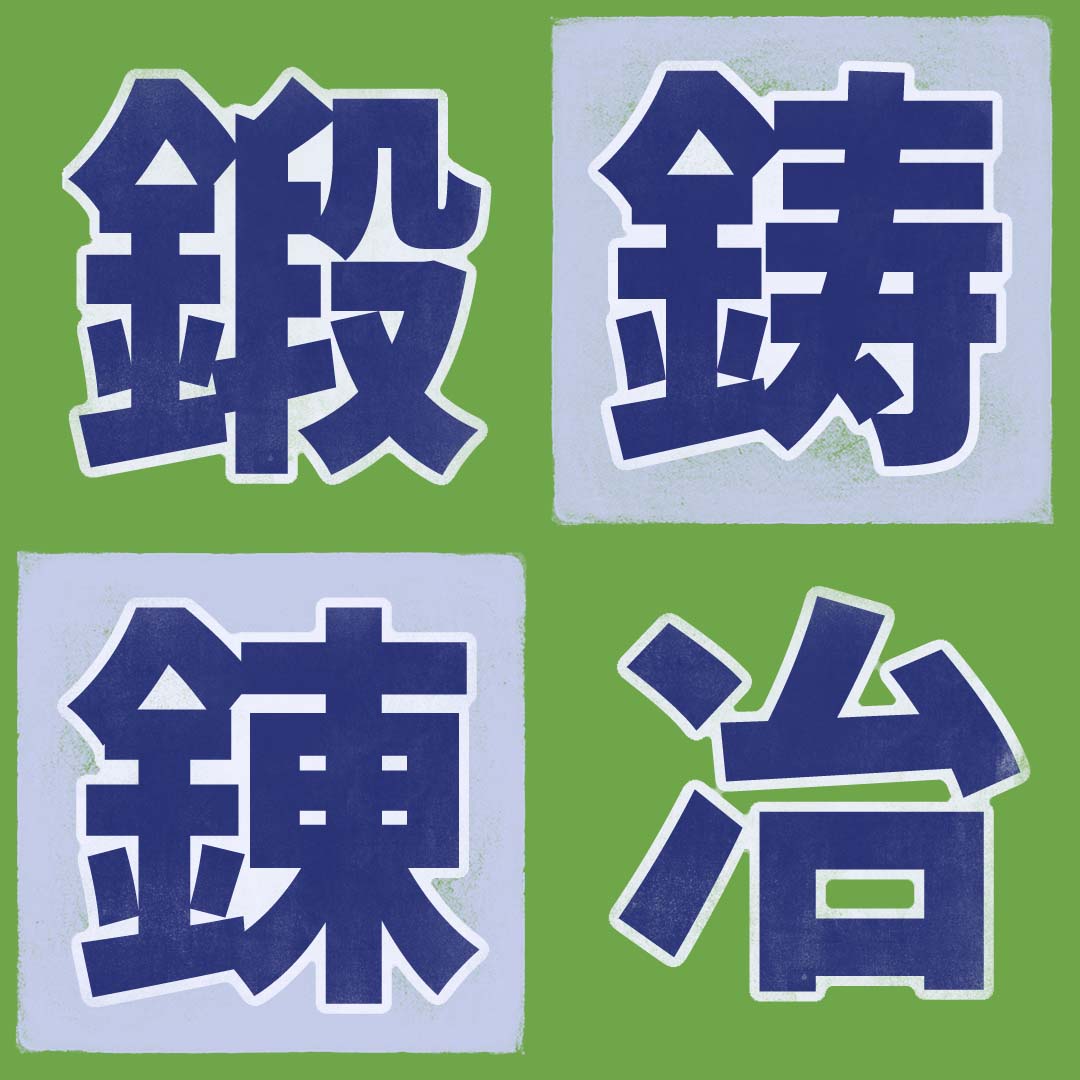
鍛
to temper
JOK: 1569
Learn about professionals who shape metal, and find out how to say, "He forged the steel into a sword." As 鍛 has strong ties to physical fitness, discover how to say, "Get in shape while you're young," "I save money, work out, and make movies," and "He showed off his toned body and physical beauty." Also learn to say, "The key to success lies in training" and "She never lacked self-discipline."
鋳
cast (metal)
JOK: 1586
Learn about turning molten metal into firm objects. Find out how to say, "The statue was cast in bronze," "The casting came cleanly out of its mold," and "A person cannot be made in a mold." See what "to force into a mold" means figuratively, learn what the Japanese melted down for the war, see when people illegally made coins, and discover which mall honors the local casting industry.
錬
temper (metal)
JOK: 1933
With 錬 there's a relentless push to improve. People use 錬 to convey becoming more skilled, more focused, more physically fit, and more high achieving. We will seldom see 錬 in relation to metalwork. Instead it typically refers to training oneself or others. The discipline and training embodied by 錬 are paramount for everyone from chefs to those climbing corporate ladders.
冶
melt
JOK: 2119
Find out how far back the Japanese craved metal and see how acquiring it changed society, enabling people to have weapons, tools, coins, bells, sewn clothes, and even sacred mirrors. Learn to talk about metal experts, from blacksmiths and swordsmiths to metallurgists and those who separate metal from ore. Also discover why there are wavy patterns on Japanese sword blades.
Kanshudo is your AI Japanese tutor, and your constant companion on the road to mastery of the Japanese language.
To get started learning Japanese, just follow the study recommendations on your Dashboard.
You can use Quick search (accessible using the icon at the top of every page) to look up any Japanese word, kanji or grammar point, as well as to find anything on Kanshudo quickly.
For an overview, take the tour.

